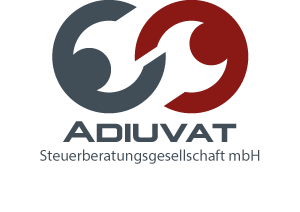Tax deadlines – Notes – Year end 2018 – Company – Part II
Dieser Beitrag ist auch verfügbar auf:
Special depreciation for small and medium-sized enterprises
In the case of the acquisition and production of movable assets held as fixed assets by tradesmen and freelancers, up to 20% of the expenses can be depreciated separately in addition to normal depreciation (cf. Section 7g EStG). The special depreciation is eligible in full for 2018 if acquired or manufactured by the end of the year.
At planned Investments can be made by taking into account a Investment deduction in the amount of 40% of the anticipated acquisition or production costs – up to a maximum of 200,000 euros – the tax effect of depreciation can be brought forward; the special depreciation can then be additionally claimed at the time of the investment (if this takes place within 3 years). The prerequisite is that the assets are used (almost) exclusively for business purposes in Germany at least until the end of the business year following the investment.
The investment deduction can only be claimed if the following size criteria are met: For those drawing up balance sheets, the business assets at the end of the fiscal year may not exceed 235,000 euros, for farmers and foresters the economic value may not exceed 125,000 euros; for entrepreneurs who determine profit by means of the income statement,
a profit limit of 100,000 euros applies. It should be noted that with regard to the claiming of special depreciation allowances, the size limits apply to the year preceding the acquisition of the asset.
Low-value assets
Depreciable, movable and independently usable assets acquired by December 31 ,2018 may be written off in full in 2018 if the acquisition or production cost does not exceed 800 euros.
For assets up to 1,000 euros, the formation of a collective item to be depreciated at 20% per year is (optionally) possible in the case of income from profits; in this case, immediate depreciation is only permissible for all other assets acquired in this year for acquisition or production costs up to the amount of 250 euros.
For surplus income (e.g. non-independent work, renting and leasing), only the 800 euro rule applies.
Favorable treatment of profits not withdrawn
Tradesmen, self-employed persons or farmers and foresters who prepare balance sheets can apply for their non-withdrawn profit in 2018 to be taxed (only) at an income tax rate of 28.25% (see Section 34a EStG). The application can be submitted separately for each business or co-entrepreneur, and for partners in partnerships if the profit share exceeds 10% or if the profit share exceeds 10,000 euros.
If the profit remaining after deduction of taxes is withdrawn at a later date, subsequent taxation takes place at a rate of 25%.
Voluntary business assets
Assets which are not predominantly used for business purposes, but which have a certain objective connection with the business, can be allocated to business assets if the business use amounts to at least 10 % but not more than 50 % (so-called optional business assets). This applies irrespective of the method of profit determination, i.e. both for those preparing balance sheets and for taxpayers who determine their profit by means of the income statement (e.g. freelancers).
The allocation to business or private assets must be made in a timely manner by means of a contribution or withdrawal in the current accounting. At the end of the year in particular, it is necessary to check whether
an asset is to continue to be treated as an optional business asset; if this is not the case, a corresponding withdrawal (affecting net income) must be made as part of current accounting
z. For example, to book for the month of December.
(For more notes & information & examples on this, please see our Information Letter 10/2018 under Business Annexes).
A) Newsletter bestellen
Immer gut informiert sein, verpassen Sie keine Neuigkeiten mehr! Mit unserem Newsletter-Service erhalten Sie stets aktuelle Informationen rund um unsere Kanzlei und dies bequem per E-Mail (z.B. geänderte Öffnungszeiten usw.). Selbstverständlich können Sie sich jederzeit problemlos vom Newsletter wieder abmelden. Am Ende eines jeden Newsletters finden Sie einen entsprechenden Abmeldelink. Geben Sie dazu einfach Ihre E-Mail Adresse ein…
